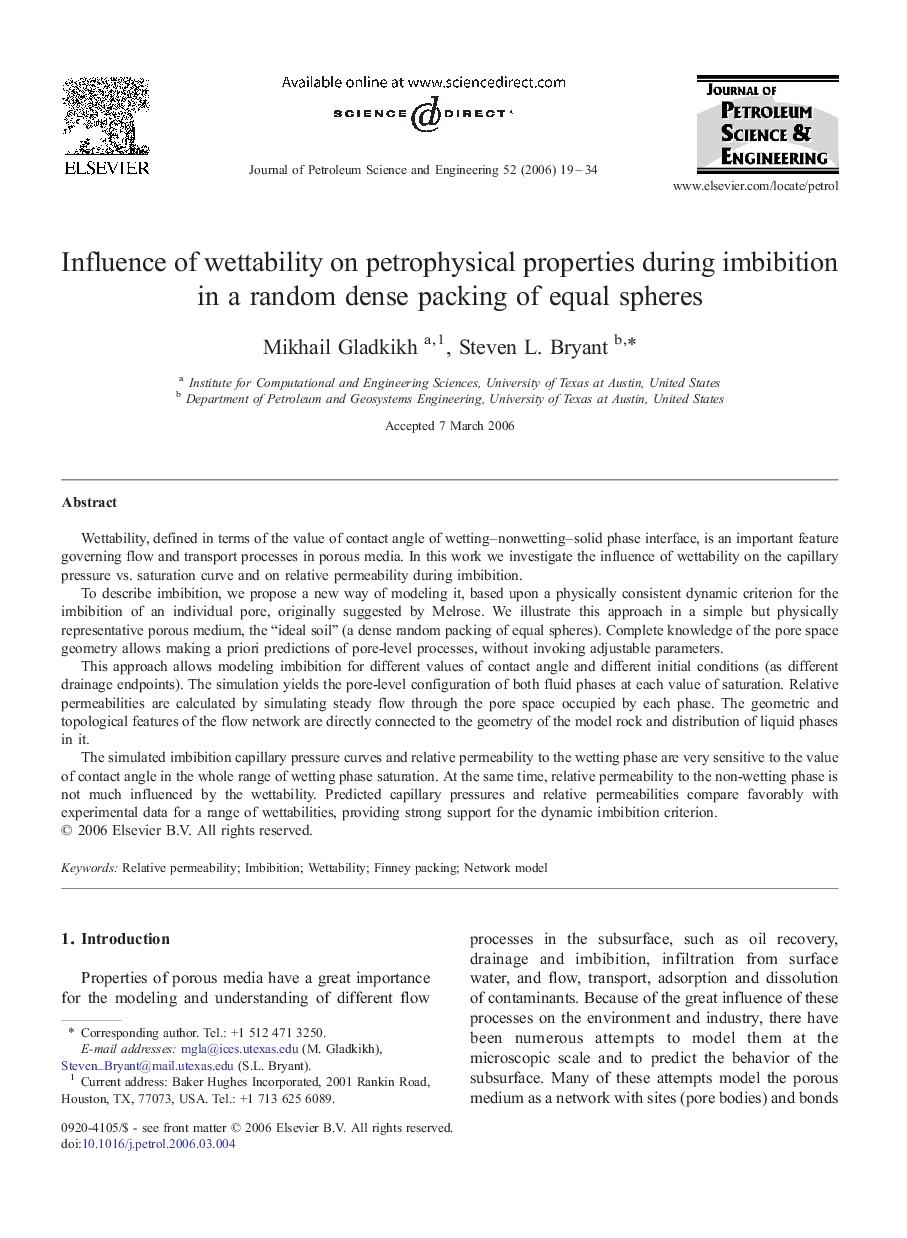| Article ID | Journal | Published Year | Pages | File Type |
|---|---|---|---|---|
| 1756459 | Journal of Petroleum Science and Engineering | 2006 | 16 Pages |
Wettability, defined in terms of the value of contact angle of wetting–nonwetting–solid phase interface, is an important feature governing flow and transport processes in porous media. In this work we investigate the influence of wettability on the capillary pressure vs. saturation curve and on relative permeability during imbibition.To describe imbibition, we propose a new way of modeling it, based upon a physically consistent dynamic criterion for the imbibition of an individual pore, originally suggested by Melrose. We illustrate this approach in a simple but physically representative porous medium, the “ideal soil” (a dense random packing of equal spheres). Complete knowledge of the pore space geometry allows making a priori predictions of pore-level processes, without invoking adjustable parameters.This approach allows modeling imbibition for different values of contact angle and different initial conditions (as different drainage endpoints). The simulation yields the pore-level configuration of both fluid phases at each value of saturation. Relative permeabilities are calculated by simulating steady flow through the pore space occupied by each phase. The geometric and topological features of the flow network are directly connected to the geometry of the model rock and distribution of liquid phases in it.The simulated imbibition capillary pressure curves and relative permeability to the wetting phase are very sensitive to the value of contact angle in the whole range of wetting phase saturation. At the same time, relative permeability to the non-wetting phase is not much influenced by the wettability. Predicted capillary pressures and relative permeabilities compare favorably with experimental data for a range of wettabilities, providing strong support for the dynamic imbibition criterion.
